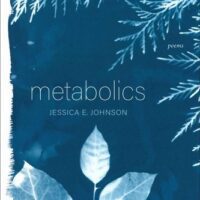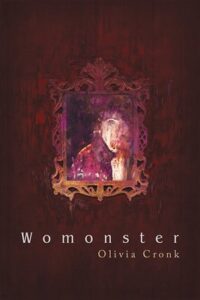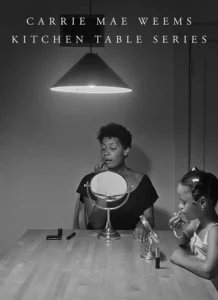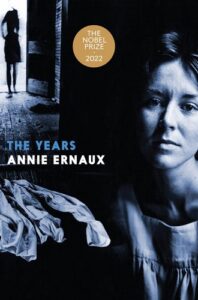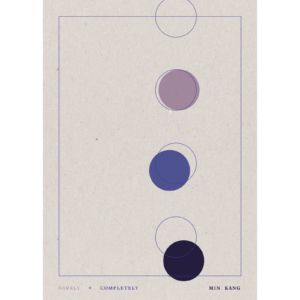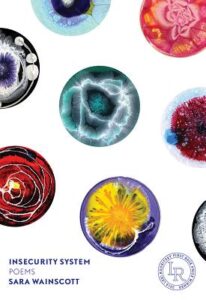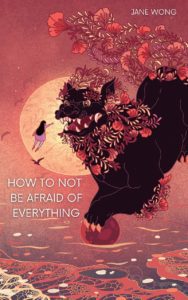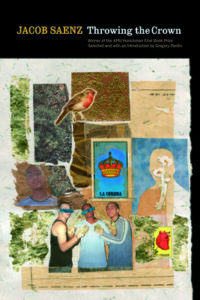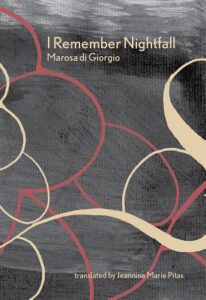I have two poet friends, a married couple with a child, who keep a bohemian apartment in Chicago. Walk into it, and you’ve entered a textured, domestic space of artful clutter: a visual feast of metaphorical resonances. It’s from them that I first heard this phrase, the high domestic: not high as in refined or exclusive, but high as in the ordinary, accessible thing imagined or presented as worthy of attention and delight. The high domestic is not a new, expensive kind of apple bitten casually over the sink, gone before you tasted it. It’s an ordinary apple, sliced nicely and laid on a pretty, found plate, eaten at the table, slowly, in good company. The high domestic is a deep entangling of life and art.
I love and seek out books that make me feel like the everyday items and rhythms of cohabitation, housekeeping, children, self-maintenance, and meal-prep can be a space for drama, ritual, and inquiry. When I was writing Metabolics, a book-length poem that borrows scientific language to investigate cycles of consumption through the allegory of a family in the Pacific Northwest, I sought out images and tones that helped me see my own domestic setting as having artistic potential. I had little kids and a demanding job. There were no residencies. I didn’t travel. I had right here, and if I was making poems, I was making them from what was close at hand. The following books of poetry, photography, and memoir illuminatethe strange and sacred in domestic spaces–their objects, their labors, and their inhabitants. These books–some of which I found while writing Metabolics and some of which I found after–help me awaken to wonder and give each thing its due.
***
Heavenly Creatures by Sally Gall
Nothing could be more mundane than laundry, but laundry on the line loses its familiarity in Gall’s photographs, billowing into shapes that turn the sky into an ocean, a red dress into a blooming jellyfish, or a set of shirts into a visual poem about the color and forms available in the most routine pieces of everyday life if you take the right perspective.
Womonster by Olivia Cronk
In two long poems influenced by the theatrics and aesthetics of soap operas, women speakers engage in over-the-top performances of self among an evocative array of accessible fashions and household wares such as “trouser-socks from the pharmacy aisles lady lady eighties/cotton blouses a dresser drawer with sachets and/ Suave shampoo […]” In various modes, the poems celebrate mass-manufactured twentieth-century homegoods and the women arranging them–and themselves–just so.
The Kitchen Table Series by Carrie Mae Weems
A kitchen table with stark overhead lighting becomes a stage for the inherent drama of an implied woman-man-child household in Carrie Mae Weems’s classic series of photographs with accompanying text. The arrangement of bodies and the interplay of expressions provide a simple and powerful reminder of the artistic possibility of domestic settings: their shapes, scenes, and relationships.
The Years by Annie Ernaux, translated by Alison L. Strayer
Ernaux pays unusual attention to domestic materials in this generational memoir, describing the wear on saucepans and jugs acquired by a working French class family before the Second World War, the home furnishings of young Parisian leftists in the mid-sixties, the menu of a typical family meal in the seventies and where the ingredients would have been purchased. Ernaux’s return to these details suggests a relationship between changes in material culture and changes in prevailing attitudes and norms. One sees one’s own pots and pans differently.
Darkly and Completely by Min Kang
This chapbook combines lineated poems and prose forms that draw on candid details of childbirth and matrescence–the birth plan, the injuries, the body fluids, the pants sizes, the jealousies–to inhabit larger questions and emotional states with humor and honesty. Written from a palpably stuck-inside moment when, for example, a poem seems improved by having coffee spilled on it, this collection doesn’t just write the details of matrescence, but reflects on what it means to do so.
Wild Grass Along the Riverbank Hiromi Itō, translated by Jeffrey Angles
A surreal book-length narrative poem that chronicles a transnational migration between a desert wasteland and a lush riverbank, Wild Grass encompasses homelessness but also the actions and motions of homemaking in circumstances that defamiliarize domestic routines. “Father” dies and decomposes in the home; then “mother” prepares and roasts a chicken. Plants breach bodies; the child-characters might be dead; then, possibly in a moment of joy or relief, they all go for a ride and listen to Neil Young’s “Out on the Weekend.” This is the most dream-like book I know.
Insecurity System by Sara Wainscott
Through four sonnet crowns that chronicle the regular life of a suburban mom speaker, beauty, freedom, and presence crystallize and dissolve in the unstable workings of the speaker’s own imaginary. The persona emerging from this landscape of work, home, motherhood, and memory is marked by appealing intelligence, exquisite sonics, and deadpan humor: “Pills and rage I reply when people say / I’m looking well these days.”
How Not to Be Afraid of Everything by Jane Wong
The domestic world of this book is palpable, laden with literal and metaphorical food items and the objects of coastal New Jersey as the speaker “gather[s] plastic cups along the shore and shake[s] them out to use for tea, juice, a home for my toothbrush.” There’s a makeshift quality to the book’s domestic life that’s tender and defiant too, as in the deservedly celebrated poem “I Put on My Fur Coat,” in which an iconic, luminous speaker makes home as one animal among others.
Throwing the Crown by Jacob Saenz
There’s a bachelor in this book observing himself–attending weddings straight and gay, visiting his mother, making dinner, taking out trash, screwing in a lightbulb, watching The Bachelor. He describes his issue with “white dresses & long aisles” as “wariness,” but he can’t escape the motions of his own domestic life, and the scenes and details of his bachelor life–the hot sauce on the frozen pizza–take on outsize meaning.
I Remember Nightfall by Marosa di Giorgio translated by Jeannine Marie Pitas
The domestic space of these prose poems by mid-twentieth century Argentine poet Marosa di Giorgio could be called the sacred-agrarian. This book inhabits a sustained world that includes a farmhouse, an extended family, fruits, flowers, vegetables, animals both wild and domesticated, ghosts, angels, and–crucially–a girl who is writing. Di Giorgio’s voice in Pitas’s translation imbues all with holiness.
Interested in reading work by the same mind who put together this gorgeous, gorgeous reading list? Here’s Metabolics again. <3
— The Eds.
In this debut poetry collection, a single speaker tries to control her body and negotiate her time with digital devices, all the while navigating identities, impulses, and relationships that are often in tension.
Metabolics, a book-length poem, borrows the movements of metabolic pathways to consider how nature accomplishes both balance and deep transformation. In visual figures and prose blocks that bridge the divide between poetry and nonfiction, Jessica E. Johnson employs scientific idioms to construct an allegory about a family in the Pacific Northwest. The region becomes a character in its own right, with cedars, moss, and heavy cloud knitting the mother, father, boy, and girl into their setting.
This far-reaching volume also serves as a study of the ecologies of contemporary parenting, with adults and children affected by “feeds” both on screen and off as their bodies metabolize food, the environment, and excess feelings such as rage. From climate change to kombucha to smartphones and curated produce, the smallest details of daily life in “Plasticland” catalyze a larger examination of selfhood: “Despite so many attempts to resolve this tension, sometimes you are you and also sometimes mother just as light can be both particle and wave.”
***
